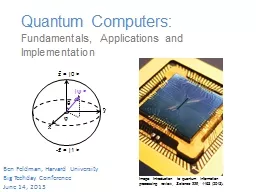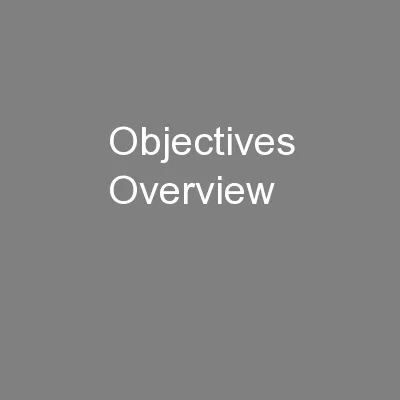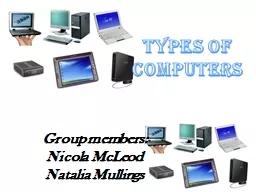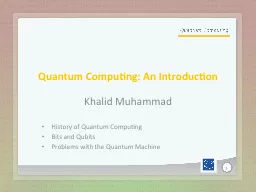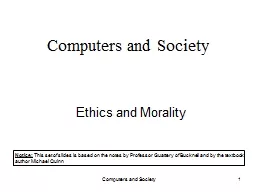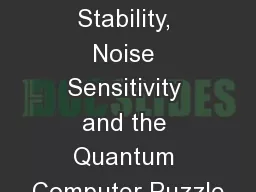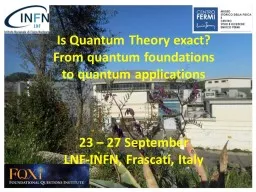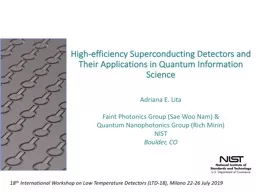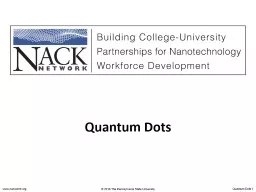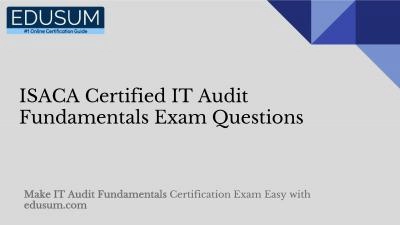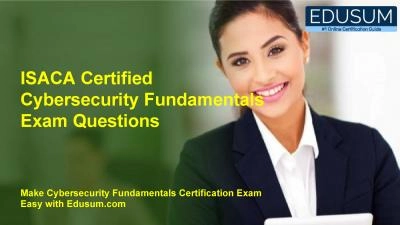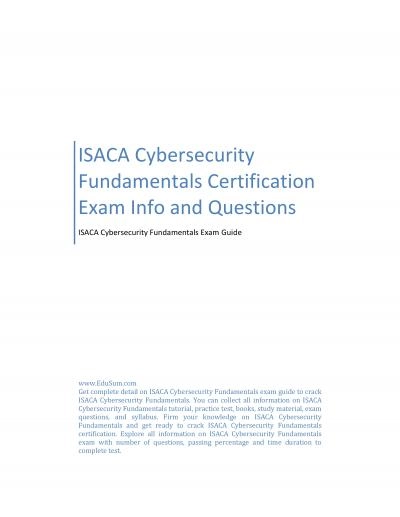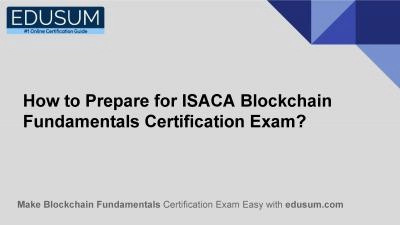PPT-Quantum Computers: Fundamentals, Applications and
Author : lindy-dunigan | Published Date : 2018-11-09
Implementation Ben Feldman Harvard University Big Techday Conference June 14 2013 Image Introduction to quantum information processing review Science 339 1163
Presentation Embed Code
Download Presentation
Download Presentation The PPT/PDF document "Quantum Computers: Fundamentals, Applica..." is the property of its rightful owner. Permission is granted to download and print the materials on this website for personal, non-commercial use only, and to display it on your personal computer provided you do not modify the materials and that you retain all copyright notices contained in the materials. By downloading content from our website, you accept the terms of this agreement.
Quantum Computers: Fundamentals, Applications and: Transcript
Download Rules Of Document
"Quantum Computers: Fundamentals, Applications and"The content belongs to its owner. You may download and print it for personal use, without modification, and keep all copyright notices. By downloading, you agree to these terms.
Related Documents

